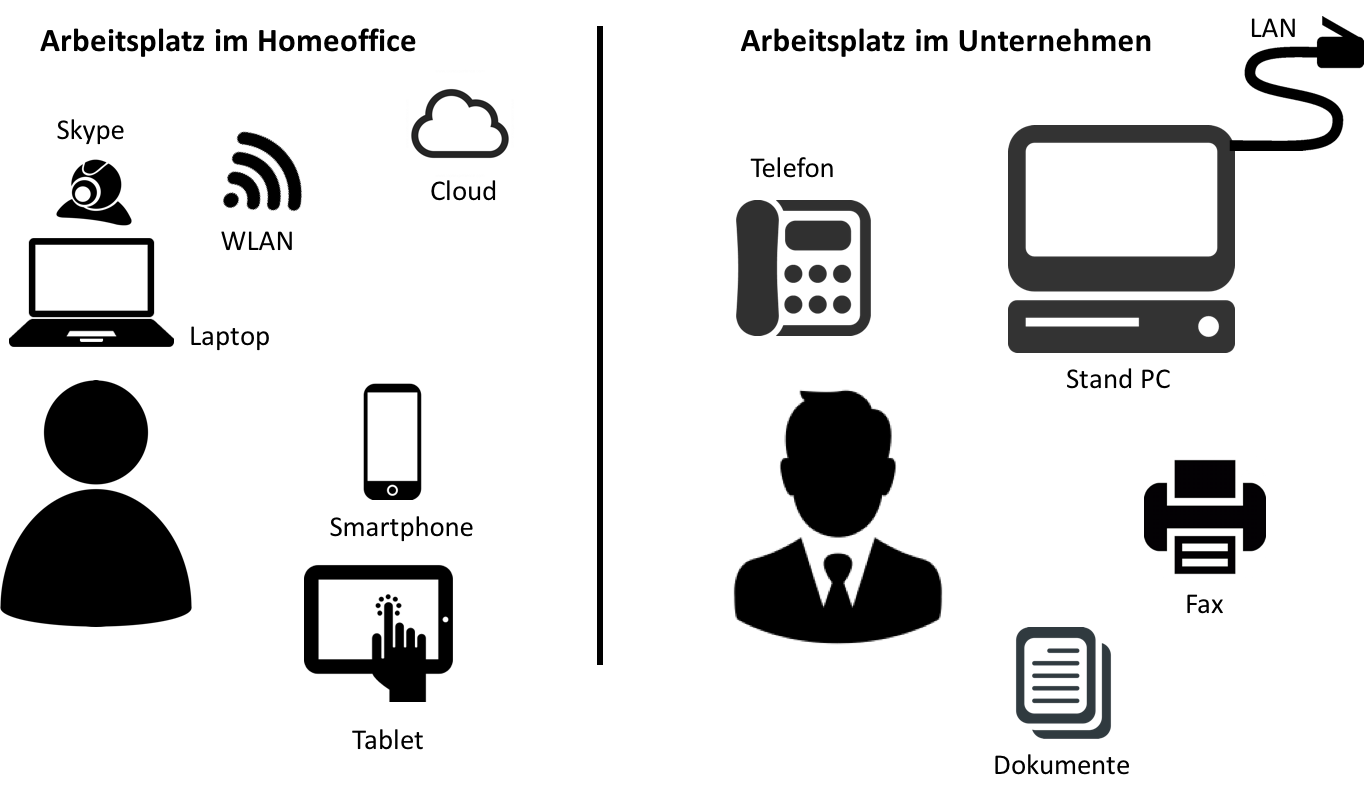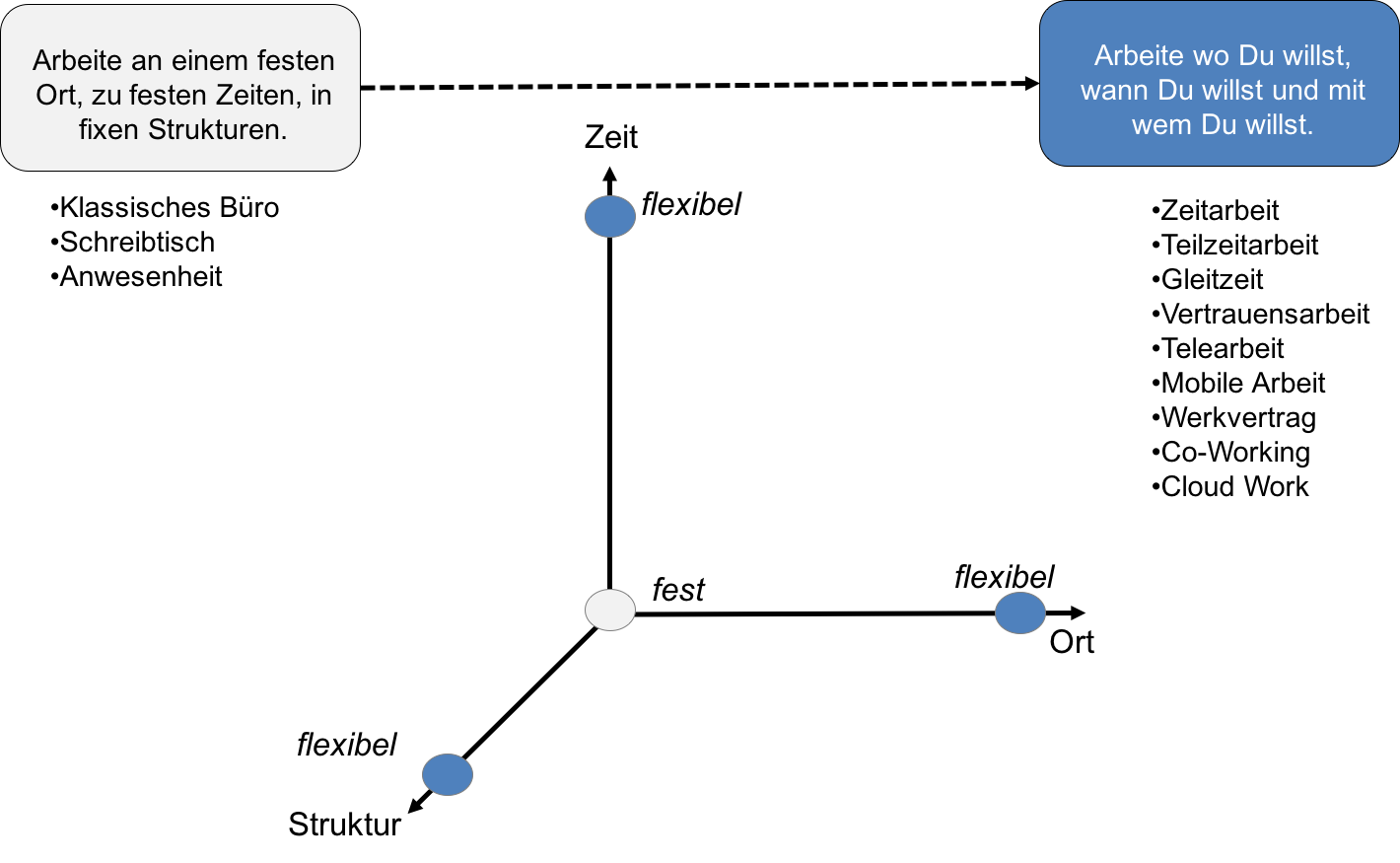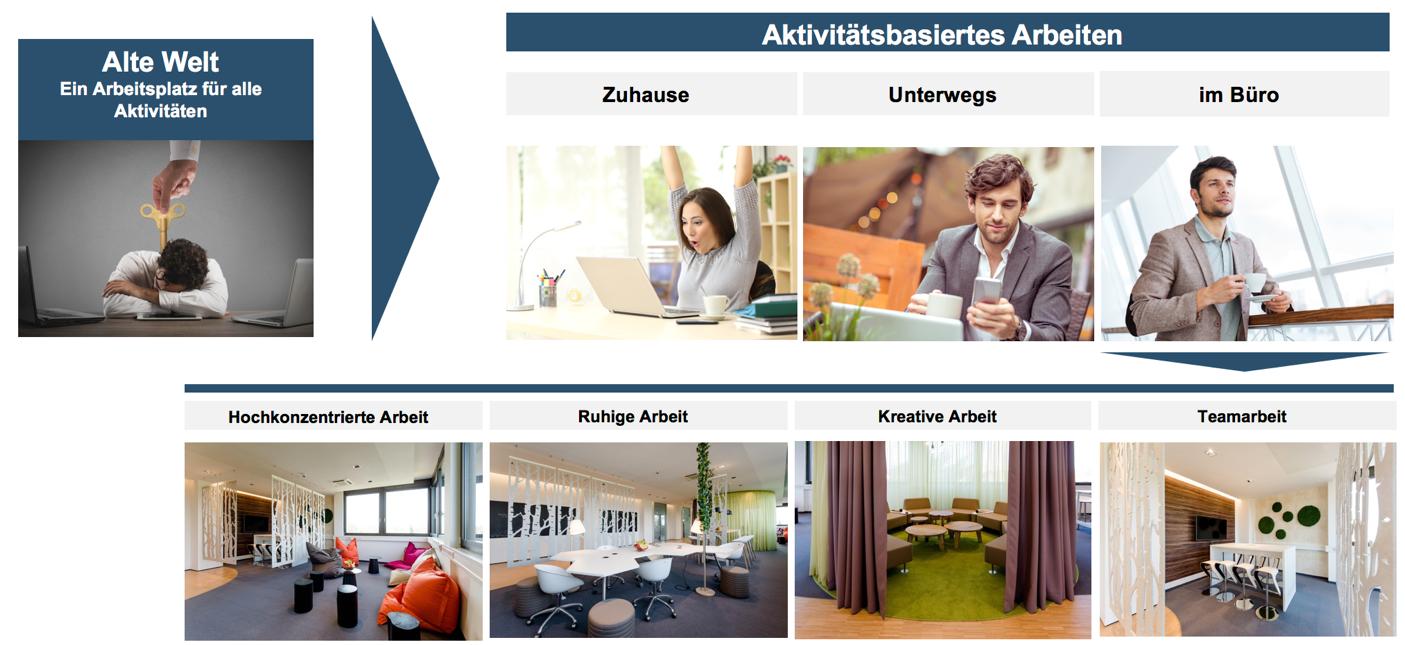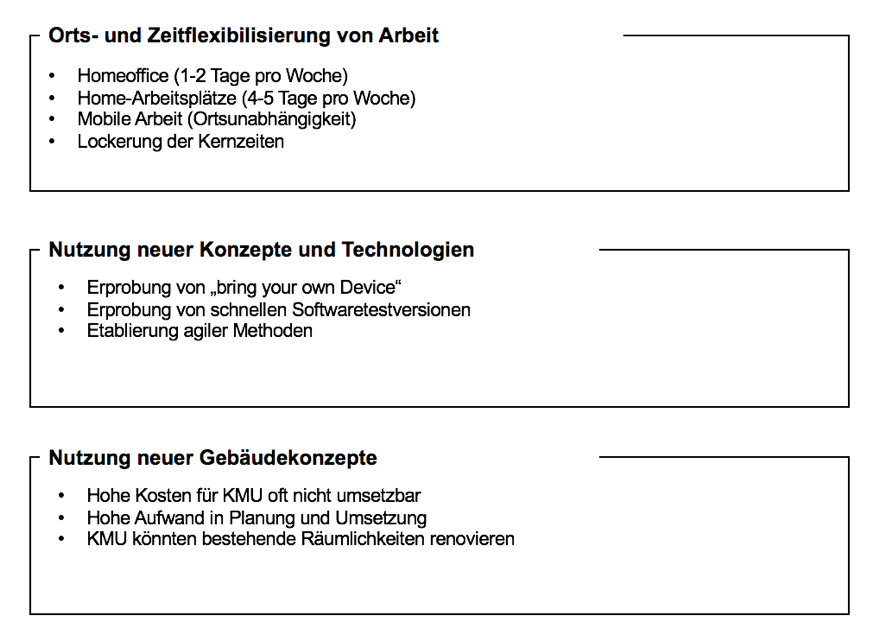The future of work in the context of the digitization of many areas of life is summarized under the term “Work 4.0”. Sounds simple, but in practice it is highly complicated: The buzzword “Work 4.0” conceals a plethora of unresolved labor law issues for employers, managers and employees Manager magazine . This article should therefore summarize the idea and selected concepts behind the term work 4.0. The basic question of the article is therefore: What is work 4.0 and is there a definition?
Overview of the terms
First I would like to give an overview of the many terms. I define work 4.0 as an umbrella term for the influence of digitization on work. In my opinion, other terms describe certain aspects of this new digital work. The table is from the source (Lindner 2019).

WHAT IS WORK 4.0
As a term, “Work 4.0” deals with the future of work in the digital age. The background is above all the problems (but also opportunities) that are causing progressive mechanization in the labor market and the general structures of companies. in the 3. Round table discussed what the term means in the context of the participants. The following characteristics of Work 4.0 were adopted by consensus:
- Work 4.0 has to be agile!
- Agility needs freedom!
- Good work is voluntary!
- The term “leadership” has to give way to “guiding”!
- Work will be more dynamic and short-cycle in the future!
- Work 4.0 is supported digitally!

In the context of Work 4.0, the focus is no longer on technical expertise, as it was many years ago, but on people. Sentences such as technology as a helper to humans and humans as “monitors” of technology underline this thesis. Overall, they have Participant in my roundtable Three approaches to work 4.0 were presented, which could shape Work 4.0.
THE DIGITAL WORKPLACE
According to many magazines, one enabler of Work 4.0 is fast and progressive digitization. The workplace is increasingly being supported by tools and other technologies and is therefore “somehow digital”. These changes result in new possibilities such as mobile or remote work as well as a high degree of networking of employees. In one Roundtable said one participant In addition: You can now work up to 3 days a week from your home office without losing touch with the team.
But it seems that this development is still in its infancy. In the Study by WiWo on digitization in the workplace shows: “ Digitization is more advanced at home than at work in the office – this is shown by a study among German office workers. “ So the full potential of the digital workplace does not seem to be available yet. Read more about this below Articles on the digital workplace .

NewWork – definition of work 4.0?
The New Work concept was developed by the Austro-American social philosopher Frithjof Bergmann, based on his investigation of the concept of freedom. Of the NewworkBlog says the following: The classic “nine-to-five job” in the office will soon be a thing of the past. The ties to fixed workplaces as well as standardized times and organizational structures continue to dissolve. Instead, work is becoming multimobile: Home office, remote work and trust work are the models of the future that blur the boundaries between work and leisure.

Overall, Petry’s graphic shows the vision of Newwork. So it means: work when, where and with whoever you want. One thing is clear: the “where” dimension indicates mobile work and “when” indicates an easing of core times. Currently, however, the dimension “with whom you want” is still in open dialogue and can be interpreted, among other things, through the idea of the hashtag Futurework. Have a look at mine too Article on NewWork for a detailed explanation of the idea.
[yop_poll id=”16″] 
Futurework – work 4.0
Overall, the investigation of the hashtag shows a strong focus on room and office concepts to promote agility in the company. Sure, there is also talk of a cultural change and this is also dealt with in great detail, but office concepts are predominantly evaluated. The following sentence sums up the topic very well: “The office is changing into a place of communication and networking. For this purpose, situation-oriented rooms are required that promote creative exchange or project work as well as offer retreats for concentrated and confidential work and optimally support routine activities. ”(Source Detecon). In the illustration you will find an arrangement of the idea with different office spaces. These should make it possible to work in different teams in different places. Have a look at mine too Article on the topic of futurework .

Agile methods and work 4.0
Many magazines and experts call for increased agility in companies and increased work with agile methods. Although numerous agile methods currently exist, Scrum has largely established itself as best practice. In combination with the new flexible work in the course of NewWork and new work environments (Futurework), a new form of work with agile methods could increase productivity. The principles and values of agility were laid down in the agile manifesto in 2001, which is the basis for all agile methods. In contrast to classic methods, agile means an orientation towards added value, ie achieving the “best” result at a fixed point in time with the available budget.
Now the following is not intended to explain the methodology behind Scrum, but rather the challenge of working with an agile method such as B. Scrum, because Gloger et al. (2016, p. 2) already stated: “The knowledge of methods is not the biggest hurdle when converting to the agile model, but the internal corporate culture and the change in internal processes.” Working with agile methods requires, above all, a high level of self-organization on the part of employees. Many employees are used to long-term, plan-oriented and homogeneous work. However, the new form of work requires a continuous speed orientation and heterogeneity. In line with these new flexibility requirements, which go hand in hand with agile methods, it is therefore important to protect employees from inappropriate and excessive stress by means of appropriate agreements and to ensure a work-life balance.
Conclusion: what is work 4.0 – definition
So in this text the question: What is Work 4.0 dealt with? It turns out that the term is the background for a collection of concepts. Work in the context of this work 4.0 is technological, more agile, faster and more short-cycle. The enabler for Work 4.0 is the digital transformation of the workplace, which, however, is often only just beginning. Work 4.0 can be designed with the vision of NewWork (work when, where and with whom you want) as well as with new office concepts.

Recommendations for action
- Thanks to short decision-making processes, SMEs can offer their employees home office and mobile work as well as home workplaces more quickly than corporations and thus be more attractive for specialists.
- A relaxation of core times can usually be implemented more quickly in SMEs than in corporations, which is why the work-life balance for employees can be increased through flexitime.
- Thanks to shorter decision-making paths, SMEs can try out concepts such as “bring your own device” or new types of agile methods faster than corporations.
- Due to the smaller budget of SMEs, new office concepts are often associated with a new building and are difficult to implement in SMEs. However, existing rooms can be renovated.

Brandes, U., Gemmer, P., Koschek, H., & Schältken, L. (2014). Management Y . Munich: Campus Verlag.
Detecon: http://www.detecon.com/sites/default/files/1_DMR_blue_Transformation_Neue_Arbeitswelten_D_02_2015_0.pdf
Gloger, B. (2016). Scrum . Munich: Hanser Verlag.
Lindner, D., Ludwig, T., & Amberg, M. (2018). Work 4.0 – Concepts for a new way of working in SMEs. HMD Praxis der Wirtschaftsinformatik , 6th (1), 17.
Lindner, D. (2019). SMEs in the digital transition: results of empirical studies . Wiesbaden: Springer Gabler.
Petry, T. (2016). Digital Leadership: Successful leadership in times of the digital economy . Munich: Haufe Verlag.



